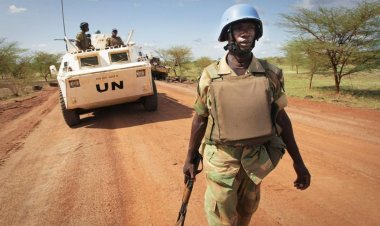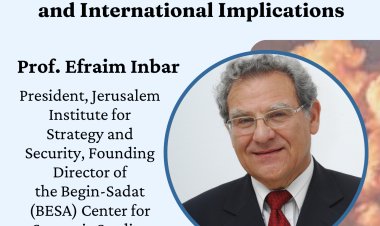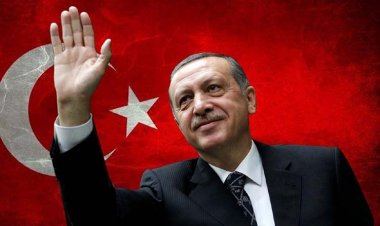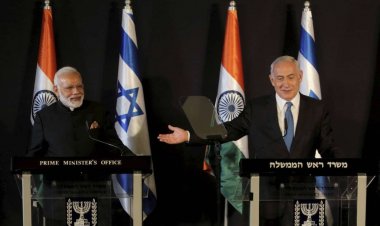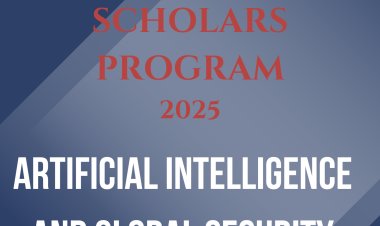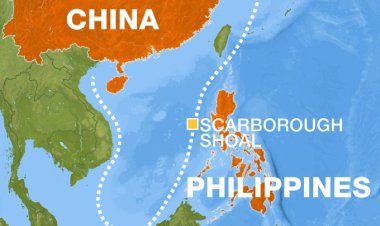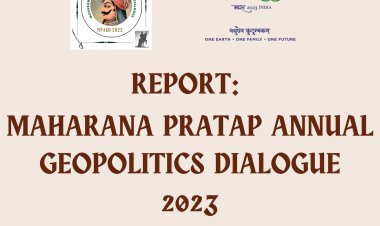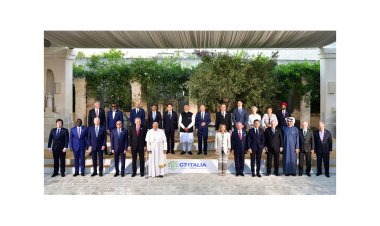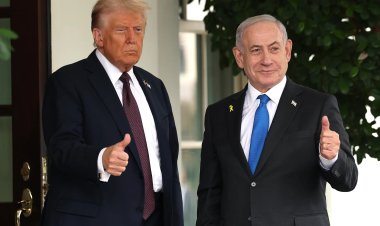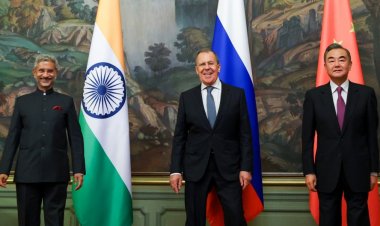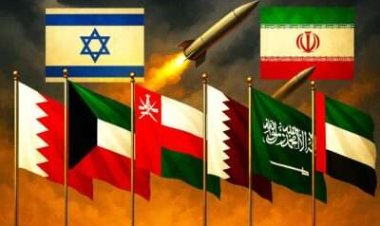Charting the Course: Sultan Haithbam bin Tarik's Historic Visit and the Future of India-Oman Relations
Sultan Haithbam bin Tarik of Oman visited India for the first time in December 2023 alongside a high-level delegation of senior ministers and officials. This visit holds immense importance as it lays out the future trajectory of India-Oman relations in the form of a ‘vision document.’ This article unpacks the implications of this visit and the prospects for India in this relationship while discussing the historic relations between Oman and India.
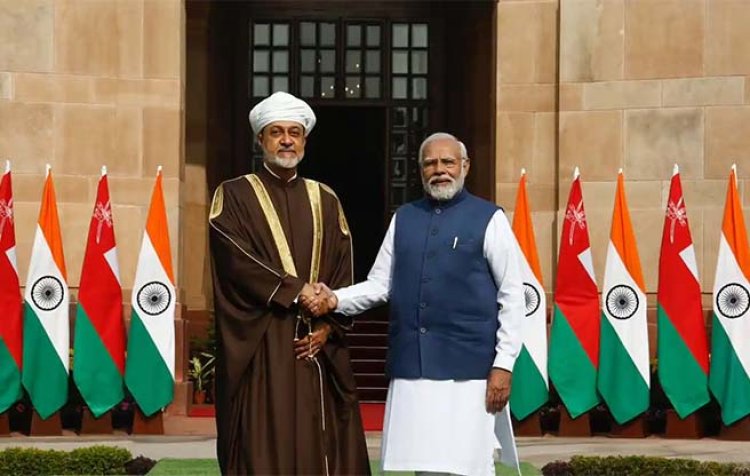
Analysis
By Jayendra Singh
Sultan Haithbam bin Tarik of Oman visited India for the first time in December 2023 alongside a high-level delegation of senior ministers and officials. The visit was the first by any Omani Sultan in 26 years, which lasted from 15th to 17th December. The sheer number of agreements, MoUs, and consensus is enough to deem it as majorly successful. The leaders touched upon important topics of mutual benefits which range from healthcare to Digital Public Infrastructure (DPI), to maritime security. India-Oman relations in the past have been cordial, considering it was the first nation from the Gulf to sign a strategic partnership with India. Just as Oman had served as a bridge between Iran and USA, during the nuclear issue, the nation serves as a bridge for India to gain further prominence in the Gulf region. This visit holds immense importance as it lays out the future trajectory of India-Oman relations in the form of a ‘vision document.’ This article unpacks the implications of this visit and the prospects for India in this relationship while discussing the historic relations between Oman and India.
Historic brief of Oman-India relations
India and Oman’s long-standing relationship is rooted in significant economic, cultural, and historic relations. The relationship predates the Westphalian concept of nation as it can be traced back up to 5,000 years in terms of people-to-people relations. The diplomatic relations were established in the year 1955, and since then visits from the highest level officials have happened regularly between the nations. According to the MEA, President Dr. Shankar Dayal Sharma (1996) visited Oman. Four Prime Ministers have visited the Sultanate: Shri Rajiv Gandhi (1985), Shri P. V. Narasimha Rao (1993), Shri Atal Bihari Vajpayee (1998) and Dr. Manmohan Singh (2008). His Majesty Sultan Qaboos bin Said Al Said visited India in 1997. Diplomatic relations, hence, have been seamless on that front. The relations between the two nations have had different agendas. The two nations have had strong ties when it comes to defence and strategic issues historically. The current visit is historic because it builds upon this strong foundation for a more globalized partnership between the two nations.
Key areas of importance discussed in the visit
Strengthening Economic Ties
The visit is part of the ongoing negotiations for a comprehensive economic partnership agreement (CEPA) between India and Oman. This agreement could significantly reduce or eliminate customs duties on a wide range of goods agreed upon by both countries, benefiting products such as motor gasoline, iron and steel products, electronics, machinery, aluminium oxide, textiles, alumina calcined, plastics, boneless meat, essential oils, and motor cars. According to a report prepared by the Global Trade Reproach Initiative (GTRI), this could boost over 83.5 per cent of Indian goods worth $3.7 billion. Both countries also agreed to a road map to boost their cooperation in areas including green energy, maritime, digital payment, agriculture, and food security.
Some agreements signed in the current visit which pertain to economic ties include one between India’s Financial Intelligence Unit, and Oman’s National Center for Financial Information to enhance collaboration in combating transboundary issues such as money laundering, and financial terrorism. A major development was the Omani-India Joint Investment Fund (OIJIF) totalling $300 million, established as a partnership between the State Bank of India, and the Oman Investment Authority, to facilitate trade and investment for growing sectors. These developments build confidence in the overall bilateral trade relationship between the nations.
Promoting people to people exchange:
The visit also helps reinforce cultural ties between the two countries, as well as with the overall Arab world. Oman’s geographic location turns it into an organic bridge between the two regions and the people. There is a significant Indian diaspora in Oman, which contributes to its economic development and cultural diversity. The National Museum of Oman recently exhibited a collection of 20 works of art from the National Gallery of Modern Art collection, showcasing the rich heritage, traditions, and values of both countries. Health cooperation between India and Oman is another key aspect of their relationship. There are several Indian hospitals in Oman offering advanced medical care, and Ayurveda continues to be very popular in Oman. Agreements were also signed on establishment of a Hindi chair of the Indian Council of Cultural Relations in Oman. The role of cricket is also going to increase as it will probably lead to paradiplomatic activity from various Indian states to engage with Oman, leading to further richening of the relationship.
Furthering Strategic Partnership
Oman is among India’s closest defence partners in West Asia, and cooperation in this field has emerged as a key pillar of the bilateral strategic partnership. Oman is the only West Asian country with which all three services of the Indian armed forces conduct regular bilateral exercises and service-level staff talks. This visit–the first by any Gulf leader post the Israel-Palestine war–also took cognizance of the growing threat of terrorism, and transnational crime. Moreover PM Narendra Modi and Sultan Tarik also discussed the urgent issue of the war wherein both parties advocated for a two-state solution as a way forward. The partnership extends towards the maritime security of the region, Oman has given India access to its Duqm Port which serves as a useful tool for India in times of strife especially with China in the Indian Ocean region. India has acknowledged the crucial nature of this relationship and has worked towards making it more seamless to align future goals.
What does the vision say?
This visit is only good news for India, as it promulgates India’s growing importance in different regions of the world, in all sectors such as economic growth, sustainability, as well as strategic partnerships. A total of eight agreements were signed during this visit, therefore regarding it as a successful visit. Foreign Secratary Kwatra informed that the two nations have agreed upon a ‘vision document’ titled ‘A Joint Partnership For the Future’ wherein 10 key focus areas (maritime cooperation, energy security, space cooperation, digital payments, health, tourism, disaster management, agriculture, and the use of cricket to enhance people-to-people ties). According to the joint statment issued by India and Oman through the MEA media center- “The Joint Vision acknowledges the remarkable synergy between Oman Vision 2040 and India's development objectives, under ‘Amrit Kaal’, affirming commitment to harnessing these complementarities for deepening the partnership between India and Oman”. This might seem like an ambitious agenda, however, the strength of Oman-India relations is fueled by not just a shared vision for a future but also a historic partnership that proves both nations can work towards mutual growth and collaboration in their respective regions.
Disclaimer: This paper is the author's individual scholastic contribution and does not necessarily reflect the organization's viewpoint.
Jayendra Singh is a Final year student at the Jindal School of International Affairs pursuing MA in Diplomacy, Law and Business. His research interests lie in the field of Global Environmental Governance, Green (IR), and caste studies.

